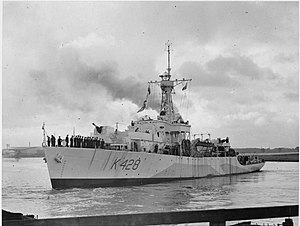This article includes a list of references, related reading, or external links, but its sources remain unclear because it lacks inline citations. (February 2013) |

| |
| Class overview | |
|---|---|
| Name | Loch class |
| Operators | |
| Preceded by | River class |
| Succeeded by | Bay class |
| Completed | 28 |
| Cancelled | 54 |
| General characteristics | |
| Type | Frigate |
| Displacement | 1,435 long tons (1,458 t) |
| Length | 307 ft 9 in (93.8 m) |
| Beam | 38 ft 9 in (11.8 m) |
| Draught | 8 ft 9 in (2.7 m) |
| Installed power |
|
| Propulsion |
|
| Speed | 20 knots (37 km/h; 23 mph) |
| Range | 9,500 nmi (17,600 km; 10,900 mi) at 12 knots (22 km/h; 14 mph) |
| Complement | 114 |
| Sensors and processing systems | |
| Armament |
|


The Loch class was a class of anti-submarine (A/S) frigate built for the Royal Navy and her Allies during World War II. They were an innovative design based on the experience of three years of fighting in the Battle of the Atlantic and attendant technological advances. Some shipyards had trouble building these larger ships, which led to widespread use of the Castle-class corvette, introduced around the same time.